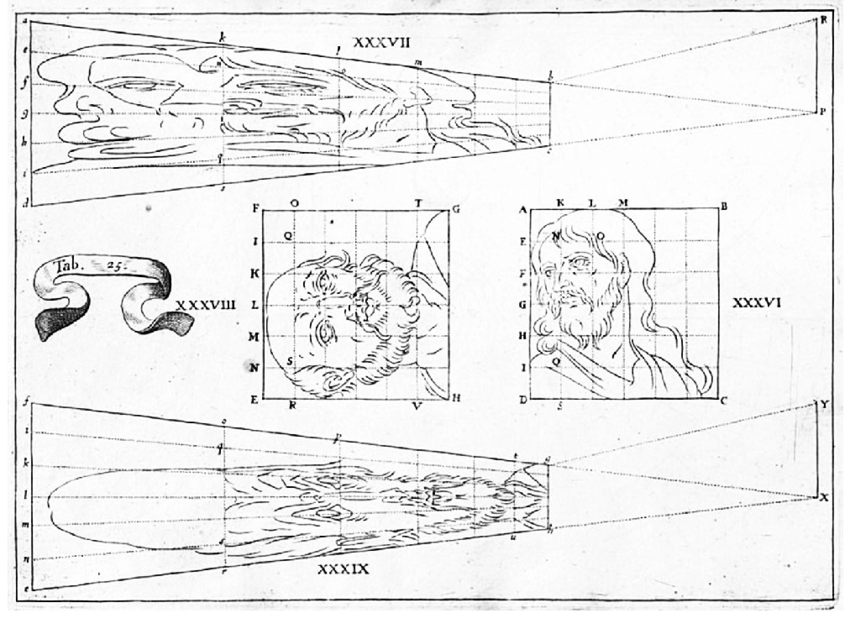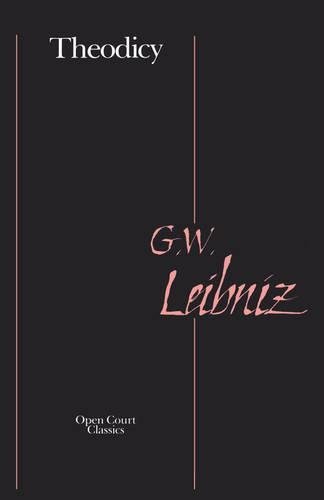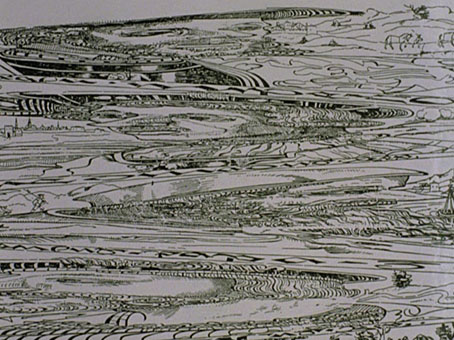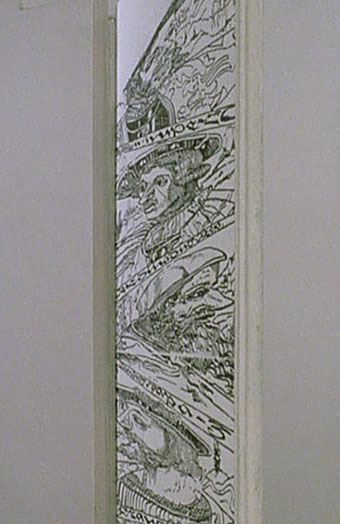214. Anamorphosis, Mental Paintings, and Philosophy
Directions for making an anamorphic projection from Jean-Francois Niceron’s La Perspective Curieuse (1652)
Introduction
I recently realized that some of the most powerful lessons I have encountered in philosophy share a dynamic which can be elucidated with the help of a fascinating technique from the visual arts known as anamorphosis (from the Greek words ana for again and morphe for form). In this post I will briefly explain anamorphosis in visual art, show how we can extend it to our networks of ideas or, to use a term from Leibniz, our “mental paintings”, and then offer a philosophical example of such an extension by discussing the problem of evil.
Anamorphosis in Visual Art
Anamorphosis occurs when an image is seen one way from the usual viewpoint but, when viewed again from an uncommon angle and/or with the help of a device of some kind like a mirror, a new form suddenly comes into view. This new form typically reveals that the original form was distorted or misleading in some way. But the shift in perspective can also open up an inquiry into which perspective is indeed the distorted one, how the two are similar and different, what other perspectives might be available, and how our viewpoint as observers implicates us in the meaning of the images.
For a well-known and powerful example, we can turn to Hans Holbein’s renaissance painting The Ambassadors (1533). Holbein presents two well-dressed French ambassadors to the court of King Henry VIII. In between them there are various objects including two globes (one terrestrial and one celestial), a shepherd’s dial, a quadrant, a polyhedral sundial, a torquetum, a lute with a broken string, an Oriental carpet, and two open books. All these objects are meticulously and realistically rendered by Holbein. This makes the amorphous image at the bottom center all the more perplexing:
When seen from a normal perspective, the image cannot be identified and is meaningless. However, the amorphous image suddenly takes on the form of a skull when the viewer moves to the side and perceives it from the upper right corner:
Mental Paintings and Anamorphic Lessons
The art of anamorphosis has been used to convey interesting insights into the nature of perception, truth, and subjectivity that extend beyond the visual arts. I think it can also illuminate our general and fundamental networks of ideas and offer a way to learn about them. We can metaphorically refer to these networks of ideas as mental paintings. G.W. Leibniz used this metaphor in 1704 during a time when anamorphic paintings were quite popular. He observed that sometimes we understand a set of ideas individually but fail to see a certain whole which they comprise “like some pictures, which appear so confused that they must be only the representation of the sky covered with clouds, in which case also we could not say that there is confusion any more than if it were another picture made to imitate that one; but when we say that this picture should make us see a portrait, we shall have reason to say that it is confused because we cannot say whether it is that of a man, or of a monkey, or of a fish, but it may be that when we look at it in a cylindrical mirror, the confusion will disappear, and that we shall see that it is a Julius Caesar.” He concludes that these “mental paintings…cannot be called confused from any way in which the parts are joined together” but rather from our inability to understand these parts in a new way (See his New Essays Concerning Human Understanding chapter 29, book 2, section 8).
Leibniz 1646-1716
I have articulated three aspects of anamorphic lessons that can apply to our mental paintings:
(1) An anamorphic shift in which our ideas about something, which seem normal or perhaps partially distorted from a normal perspective, are suddenly understood as drastically different from a different perspective. Naturally with anamorphic paintings like The Ambassadors one must move one’s physical location to obtain the revelation. But one can also make the shift mentally with the help of art, literature, philosophical arguments, film, music, painting, opera, or some other perspective-shifting material.
(2) Anamorphic inquiry in which we critique the meanings of our ideas in relation to the competing perspectives. We might ask: which view is the normal one? Is there a normal one? Do they both have a meaning worth preserving? Can their meanings be combined? Should both be discarded? Is there a new perspective that would give new meaning to both? And so on. Such questions can put us in what Friedrich Schiller called “a musical mood” in which, to use a helpful description from Julius Elias’ Plato’s Defense of Poetry (SUNY, 1984), “the hard edge of rigorously structured thought is softened and the mind hovers over its data making tentative explorations of possible structures other than those that govern existing modes of interpretation” (120). These possible structures can then lead to something Paul Ricoeur referred to as “semantic shock” in which two sets of meanings clash revealing not only differences but similarities that occasion new insights that help us radically reconceive some phenomenon. For example, once we see the skull in The Ambassadors we might view the work as a memento mori or an occasion to remember our death. The so-called normal view of the painting, the view that displays human power and ingenuity, would be problematic because it prevents us from looking directly at our mortality and the destiny of our soul in relation to God. This interpretation gains strength when we discover a crucifix peeking in from behind the curtain in the upper left-hand corner. But when looking at the skull we find it difficult to see the ambassadors and their instruments. This suggests that religion can distort the secular values in equally problematic ways. However, it seems one can see both the skull and the ambassadors clearly enough if one takes the right viewpoint. So perhaps we can embrace a worldview that includes aspects of both. Whatever the case may be, we see that the anamorphic revelation facilitates inquiry into the meaning of the painting. The same kind of inquiry can occur when we receive a revelation regarding a mental painting.
(3) Finally, there can be autoanamorphic inquiry if the shifting of perspective leads us to examine ourselves. Such inquiry is reflexive and reveals that the subject doing the inquiry is also the object of the inquiry. For example, once we know the secret of Holbein’s painting it is no longer just a captivating and masterfully rendered image of repose: it is a work with a secret that threatens this repose. We, knowing this secret, can then see the ambassadors as tragic or comic figures on their way to a reversal of fortune. This insight need not involve us in any self-examination. But we might suddenly realize that we, too, prioritize material acquisition and power rather than the health of our soul. And this realization would turn the inquiry towards ourselves in ways that might have significant existential ramifications.
An Example of Philosophical Anamorphosis from Leibniz: Theodicy
Let’s now take an example of an anamorphic shift in relation to a certain philosophical mental painting, namely, one that shows the world to be full of unjustified evil. This painting shows the world to be, on the one hand, full of natural evils such as illness, earthquakes, and floods that occur without moral choice and, on the other hand, moral evils such as rape, murder, and torture that are a function of voluntary choice. Millions of years of human and non-human suffering strongly suggest that, despite the beauty, intelligibility, and goodness that exist in the world, there is no all knowing, all good, and all powerful God who is the creator and sustainer of it. This mental painting is indeed as disturbing as it is captivating, and its power makes belief in God difficult to say the least.
However, G.W. Leibniz thinks we can come to see this mental painting, this God-denying network of ideas, in a radically new way if we make an anamorphic shift with the help of his theodicy or effort to justify God’s ways in the face of evil. Consider these passages from section 147 of his book Theodicy (1710):
“Here is another particular reason for the disorder apparent in that which concerns man. It is that God, in giving him intelligence, has presented him with an image of the Divinity. He leaves him to himself, in a sense, in his small department, ut Spartam quam nactus est ornet [to adorn Sparta which he obtained]. He enters there only in a secret way, for he supplies being, force, life, reason, without showing himself. It is there that free will plays its game: and God makes game (so to speak) of these little Gods that he has thought good to produce, as we make game of children who follow pursuits which we secretly encourage or hinder according as it pleases us. Thus man is there like a little god in his own world or Microcosm, which he governs after his own fashion: he sometimes performs wonders therein, and his art often imitates nature.”
So far we see Leibniz trying to get us to change our perspective so to speak – to see our mental painting, the one that includes unjustified evil, from another angle. But now he adds a few passages that reveal an amazing anamorphosis of the mind, namely, that there is no unjustified evil at all since God, on the one hand, uses evil as a just punishment of freely chosen actions and, on the other hand, insures that a greater good will always be drawn out of the evils that seem so gratuitous:
“But he also commits great errors, because he abandons himself to the passions, and because God abandons him to his own way. God punishes him also for such errors, now like a father or tutor, training or chastising children, now like a just judge, punishing those who forsake him: and evil comes to pass most frequently when these intelligences or their small worlds come into collision. Man finds himself the worse for this, in proportion to his fault; but God, by a wonderful art, turns all the errors of these little worlds to the greater adornment of his great world. It is as in those devices of perspective, where certain beautiful designs look like mere confusion until one restores them to the right angle of vision or one views them by means of a certain glass or mirror. It is by placing and using them properly that one makes them serve as adornment for a room. Thus the apparent deformities of our little worlds combine to become beauties in the great world, and have nothing in them which is opposed to the oneness of an infinitely perfect universal principle: on the contrary, they increase our wonder at the wisdom of him who makes evil serve the greater good.”
Leibniz’s example allows us to illustrate the three aspects of anamorphic lessons I sketched above. He is offering us an anamorphic shift in the realm of our ideas which can then open up a space for anamorphic inquiry. This inquiry invites us to compare our first view of a Godless world of gratuitous evil with one that reveals God’s hand in, on the one hand, sustaining things such as life, force, reason, and being, and, on the other hand, generating a greater good from freely chosen evil acts. And this comparison can lead to an assessment of various arguments in order to discern the truth (for an overview of the central arguments involved in the problem of evil, go here). For some this inquiry may be nothing more than an intellectual exercise. But if it has momentous personal importance, which clearly the problem of evil has for many who encounter it, then it would fit our description of autoanamorphic inquiry.
In future posts, I will take a look at other anamorphic lessons in philosophy and the humanities that had a powerful effect on me and my intellectual and moral development.
Another example of anamorphosis discussed in the short film De Artificiali Perspectiva, or Anamorphosis (1991) by the Brothers Quay (watch the film here).
For more of my posts on aesthetics, go here.
For my posts on evil, go here.




